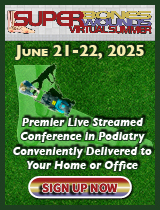





|

|
|
|

|
Search
05/28/2025 Allen M. Jacobs, DPM
New Student Enrollment Campaign (Rod Tomczak, DPM, MD, EdD)
I completed by residency under the direction of
Earl Kaplan and Irving Kanat. At the time,
residencies were not yet widely available. When we
graduated, both Dr. Kaplan and Kanat made it clear
that we were expected to go into the podiatry
community and lead as educators, advancing the
profession. We were told to go forward and
establish residency programs and grow this
profession. Nothing less was expected. At that
time, Kern Hospital had a plethora of dedicated
educators giving their personal time to lecture
and consult and instruct in the OR. We had a
faculty providing a willing example of what was
needed to grow the profession. E. Dalton McGlamry
was doing the same in Georgia. James Ganley in
Philadelphia. Many others throughout the 1970's
whose names I know or do not know were growing
this profession. The residency experience grew
from one to two to three years. The profession
grew.
Do we require a 3-year residency +/- a fellowship?
Some argue no. I disagree. Those of us who
actually instruct residents know that in general,
there is a major increase in capability between
the second and third years. This past week, I
watched a third-year resident perform a perfect
ORIF of an uncomplicated ankle fracture with
minimal direction from me. The week before, I
watched a third-year resident perform a perfect
STJ arthrodesis on a Sanders stage IV calcaneal
fracture, elevating the posterior facet to restore
height, dealing with the complication of
osteopoenic bone, utilizing good judgement and
demonstrating excellent insight and judgement.
Again, little direction was required by me.
Two weeks earlier, I worked with a second-year
resident on a progressive collapsing foot
deformity, with double calcaneal osteotomy and
Cotton osteotomies. The second-year resident was
good, but not ready for prime time. Therefore, I
did much of the surgery teaching as we proceeded.
I observed third years do a perfect pilon
fracture repair, Charcot's joint surgery, and so
on. It also requires time and experience to
perform an adequate Lapidus, or at times even
hammer toe correction, or evaluation and
management of major infectious disorders.
Judgement requires development and experience as
well as adequate manual skills.
Now we are moving into therapies such as
transverse tibial transport for the treatment of
diabetic ulcers in dysvascular limbs. The
"diabetic foot" is more than debridement, negative
pressure therapies, and slapping some unproven
graft material on a wound. Complex surgeries such
as IM nails, external fixation, orthoplastics,
skin grafts, evaluation of multiple comorbidities,
are at times necessary. Three years and a possible
fellowship are needed to master these techniques
mentally and manually.
Those who argue against the 3-year model, in my
opinion, do not understand the complexity of the
cases we are now charged with treating, nor the
complexity of the patients many of us treat. This
is not your father’s podiatry that I entered in
1975. Those who actually work alongside of today’s
residents likely have a comfort level with their
capabilities. Not all, but many if not most. If a
well-trained resident does not wish to practice to
the limits of his or her training, that is fine.
If a well-trained resident wishes to pursue a
fellowship and gain greater expertise and
experience, that is also fine. The profession has
evolved and changed for the better.
In my experience, today’s resident following a 3-
year experience is unrecognizable compared to
those who graduated in 1973 and were luck to
complete a one or rarely 2-year residency.
Podiatry is more than a manual surgical skill. A
podiatrist in actual practice confronts
dermatologic disorders, vascular disorders,
neurologic disorders, rheumatic disorders,
musculo-skeletal disorders, toenails to trauma.
Given someone who desires to do little if any
surgery, there remains a vast bank of experiences
and knowledge needed to be successful as a
clinician in daily practice.
The 3-year residency model is helpful for these
individuals also. We are now trusted with the care
of many patients facing complex medical issues.
Podiatry was not always regarded as being so
capable but is so now. We have a responsibility to
the public to graduate the best educated, not the
minimally educated. I started practice in a world
where a PTs would not honor a DPM prescription,
where a permission slip was required from an MD to
care for a diabetic patient, where referrals from
health care providers to a DPM were uncommon,
where pharmaceutical reps seldom if ever called on
a DPM let alone left samples, where surgery was
severely restricted if you were able to obtain
surgical staff at all. I saw it and observed the
morphogenesis into what we are now.
I have no quick solution to the current
recruitment issues. I know how I am treated in the
hospitals now compared to 45 years ago. I know
what pathology I am referred now compared to 45
years ago. The difference has been the evolved
education and capability of today’s DPM resident
vs. 45 years or 60 years or 70 years ago. There
are those who present a Voltaire-like observation
of podiatry, " if this is the best of all possible
worlds, what then are the others?" As I stated
earlier, this is not your fathers DPM. Let us not
proverbially "throw out the baby with the
bathwater". I am not suggesting complacency or
failure to seek improvement in our profession. I
am suggesting that the current status of our
profession in medicine is not the problem.
Allen M. Jacobs, DPM, St. Louis, MO
There are no more messages in this thread.
|
| |

|
|
|







